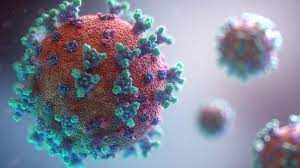In 1898, scientists observed that bacteria-free filtrate could cause disease. As no particulate matter was present, they called it Virus which meant poison in Latin. In fact, viruses are infectious agents which are too small to be seen under light microscopy. Viruses are structurally simple and contain a single type of nucleic acid, either DNA (Deoxyribonucleic acid) or RNA (Ribonucleic acid) but both types are never present together as in plants or animals. That makes them metabolically inert and therefore, they have to depend on other living cells for the synthesis of viral proteins and nucleic acid.
Viruses have a central nucleic acid core which is their genetic material. It is surrounded by a protein coat that is antigenically unique for a particular virus. The protein coat, known as Capsid, imparts structure to the virus by demonstrating helical or icosahedral symmetries. Some viruses also possess an external membrane envelope consisting of lipid and....

